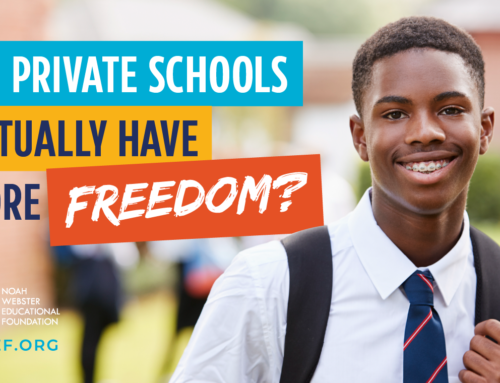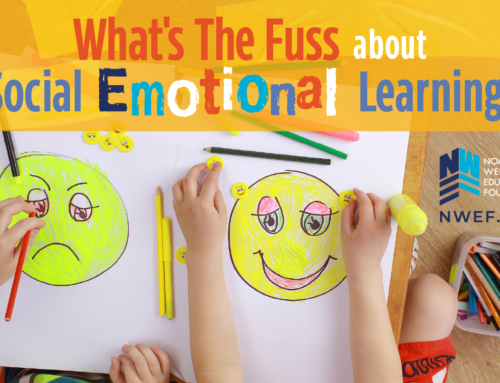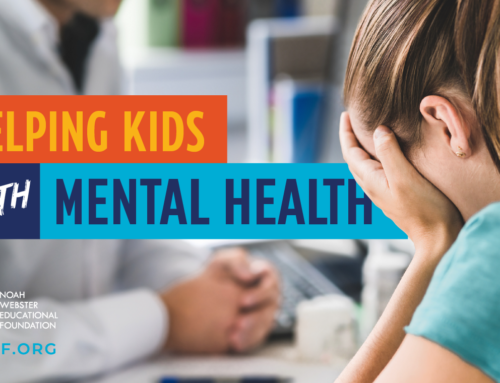
The Biden Administration has proposed a $20 billion plan to diminish funding inequities between poor and rich school districts by distributing more funds to poorer areas.
Sounds nice, right? Except for one major detail…As Chalkbeat shares, we don’t yet know how the plan is supposed to work.
It might make sense to give more money to a school that’s struggling. But if that school is not managing money properly, then how would more funding help? And how can taxpayers know the difference between a legitimate budget issue and bad management policies?
Let’s take a closer look at some school funding issues and how we can find better solutions…
The perceived problem
Suffering schools
The Washington Post covered the story of a New York City school that reportedly suffered from underfunding. School faculty shared that despite the increasing operating costs, the school’s funds have been diminishing over the years.
The school actually has high graduation rates, but the faculty say that the school is unable to reach its full potential without additional funding. Classroom sizes continue to grow, and teachers have been volunteering their time outside of regular work hours.
The Post says that there needs to be a public outcry to make a change.
There have been worse school cases. The Manhattan Institute records that in Baltimore, Maryland, several schools had to close down for a few days due to a lack of heat. A school in Providence, Rhode Island was found with leaking pipes and brown drinking water.
Clearly, something needs to change.
Meager teacher wages
What’s more, teachers are reportedly not paid enough. According to CNBC, “Teacher quality is the No. 1 school-related factor in student achievement. Yet, the profession is in turmoil: many earn less than a family living wage, up to a quarter of the workforce leaves teaching annually and about one-fifth are forced to seek a second job. According to the Economic Policy Institute, teachers make about 20% less than other college-educated workers with similar experience.”
Some politicians have been vocal about additional teacher pay, like Bernie Sanders. His campaign website says, “The historic teacher strikes of the past few years has brought national attention to the fact that teachers are paid totally inadequate wages. As a result of low pay and other inequities, 20 percent of teachers now leave the profession within five years – a 40 percent increase from the historical average.”
Naturally, we want the educators of our children to be well-compensated. But what is considered to be “inadequate wages”? And are underfunded schools the cause?
How school funding works
Public school funding is divided into three levels: federal, state, and local. By omitting a federal role, the U.S. Constitution leaves schooling decisions up to the states. State and local funding make up close to 90 percent of funding, while federal funding contributes about 10 percent.
The Constitution, by default, keeps schooling at a local level instead of a federal one. That way, states can decide what works best for their unique local challenges and particular citizen demographics.
State funds come from income tax, sales tax, and other fees. Local funding for schools is based on property taxes. Inevitably, schools in poorer areas receive less funding (due to lower-value property). So, that’s why the new Biden plan and Title I legislation have set out to help these poorer schools. But are these plans effective?
The reality of the situation
America’s school spending
Interestingly enough, what’s not addressed in The Washington Post article is how much schools spend in New York.
New York spends more than any other state in the U.S. at about $24,000 per student, Education Data writes. That would account for over $62 billion annually.
Back when The Post covered the story, the New York City budget was at $32.6 billion, according to QNS. The budget has only grown since then, up to $34 billion, as cited by the New York City Department of Education.
The Manhattan Institute conducted a report to bring some clarity to school conditions. While we have heard that schools are hurting, fewer than 1 in 20 American schools are in poor condition. That comes out to only 3-4% of all schools, including schools in high-poverty areas.
That said, most Americans are not aware of how much we spend on education. About one-third of Americans think the U.S. spends around $4,000 per student. In reality, we have spent more than most countries, and our spending is at an all-time high.
To put things into perspective, per-pupil spending in the United States has almost tripled over the past fifty years. In 1966, the national per-pupil spending was at $4,720, In 2016, it was $13,847.
The Manhattan Institute also reports that the United States spends more per student than most other developed nations, such as the United Kingdom and France. (Norway, Switzerland, and Luxembourg are some of the few that spend more than the U.S.)
Schools may rightly want more funding in some situations. But it is important to note how much schools are already spending before assuming that more money will help.
Teacher salaries
Are teachers underpaid? Well, that depends on how you look at things.
The Manhattan Institute finds that public school teachers are paid more than private school teachers. On the whole, people make more money as public school teachers than they make before or after teaching (if they change careers).
The same CNBC article that said “the profession is in turmoil” mentioned the $92,000 annual salary of one veteran teacher. In Mississippi, which is the lowest paying state, teachers make about $50,000.
Yet, it is worth noting that while Mississippi pays teachers less than other states, the cost of living is also much cheaper in Mississippi. City Journal remarks that even states that are on the lower end of teacher salaries have pensions and other benefits that make up for the salary difference.
Here’s something else to think about: American Enterprise Institute (AEI) says, “Although teacher quality certainly matters, most of the variance in student achievement is associated with factors outside the classroom. Just as current teachers should not be blamed for ‘failing schools,’ policymakers should not simply assume that investing heavily in teacher salaries is worth the political and economic costs.” In other words, giving more to teachers may not significantly improve the school.
Another argument that City Journal brings up is that teachers get paid less than the average college graduate. However, not every person with a college degree gets paid the same salary. Salaries are determined by what’s in demand, not years of school.
Finally, The Manhattan Institute mentions the disproportionate increase in non-teacher roles in the public school system. While teachers’ wages have stagnated, schools have added on administrators and other non-teaching staff in droves. Why are non-teaching roles prioritized over teachers?
In summary, teachers understandably want higher pay—but it’s not a national crisis. It is more a matter of perspective and priorities.
Funding discrepancies
Then there’s the issue of the funding gap between rich and poor school districts…
The Manhattan Institute points out that Title I has actually helped even out national spending discrepancies. The gap is no longer as wide as many people think.
Realistically, state spending varies. State and local funding each contribute about 45% of school funding. The exact amount of per-student contribution varies between states and largely depends on the local cost of living, according to Education Data.
So yes…school funding varies somewhat across the country, but that doesn’t mean something is wrong. On the whole, funding is no longer as big of a problem for schools as the media makes it out to be.
So if funding isn’t the problem…what is? There’s a better solution for school disparities. And no, it doesn’t require more federal involvement.
The real issues in school
There’s no denying that there’s a problem in our schools. And in some cases, yes—more funding would help the situation. But it’s not really about how much is spent, but how it’s spent.
Nationally, schools have been disrupted by poor conditions. We already mentioned the school in Baltimore with no heat in the winter and the school in Providence with brown drinking water. Most people would agree that these problems are unacceptable.
Yet, there appears to be a disconnect: Baltimore spends over $15,000 per student, and Providence spends over $17,000 for each student, observes the Manhattan Institute.
Why is this happening, then?
National Review attributes the problem to a poorly-run government system. If that’s true, a continual flow of federal money won’t be much help.
National Review says, “Further expanding the federal government’s role in education funding would simply guarantee that more federal taxpayer money would be poured into states’ outdated and unfair K–12 funding systems for years to come. And, unfortunately, any hope that the funding would actually improve student success is just wishful thinking.”
The federal government doesn’t have a stellar track record with closing the achievement gap through past initiatives like Title I. Despite past failures, the Biden Administration intends to throw more funds (and corresponding oversight) at the problem.
Since the 1990s, federal funding has almost doubled without significantly improving student achievement.
However, the fault is not just at a federal level. State and local tax dollars compose about 92% of public school budgets.
The Daily Signal explains that schools are failing because the “…public school system is drowning in bureaucracy. And bureaucrats get paid before teachers—and before students get new textbooks.”
From 1950-2015, the number of public school students grew 100%, whereas teachers, administration, and other staff grew over 700%. Could this be why resources are lacking in public schools?
So, what’s the solution?
Accountability
It’s easy to forget the influence that you and other voters have in public schools. Since most school board members are elected by residents of the district, you have a say in what goes on in your local school. Even when school board members are appointed by government officials like the governor or mayor, those appointing officials were put into office by the people. In some way or another, the community always has a say in the school board.
Education Post notes that the school board makes policy decisions for schools. Parents and other involved citizens have the freedom to contact their school board members, attend school board meetings, and publicly voice concerns.
Local citizens have the responsibility to keep track of the school board’s decisions, which profoundly impact the school and—most importantly—their children.
Budget Management
Who decides where the money goes?
Superintendents are responsible for the school budget and share the responsibility for district funds with the local school board. The school board hires a superintendent to serve as a liaison between the board’s policy decisions and local school operations.
Education Week’s Market Brief reports that 80% of the typical school budget goes to salaries and benefits, whereas only 8% goes to facilities. While teachers and administrators certainly deserve good pay, these budget priorities could explain why some facilities are in poor condition.
How can a school board determine what is a good use of funds? By listening to the taxpayers. It’s up to local citizens to tell school board members about community priorities. As more and more parents advocate for the educational success of their children, school boards can make informed decisions about how to budget for those priorities.
Facility Management
What exactly does the term “school facilities” include?
To help you get a picture of your local school’s potential needs, the facilities management company FMX describes the facilities of a well-run school:
- Clean and functioning buildings/premises
- Gas and electricity
- Up-to-date health and safety protocols
- Organized work orders (to keep track of what supplies are needed and what has already been ordered)
- A scheduling method for space, transportation, and other resources so nothing is double-booked
If your school is lacking in any of these areas, that doesn’t mean it’s a lost cause. However, Harvard Business Review suggests that more money cannot be used as a bandaid for problems. First, local schools with budget concerns must improve their structure and eliminate wasteful practices. Policies and teacher training must be adjusted to increase student motivation and provide sufficient discipline. Local taxpayers have to provide accountability about how the school uses tax dollars.
While a school may need additional funding eventually, management needs to change first to ensure that new funds don’t fall through old cracks in the system.
School Choice
Restructuring local schools, rearranging budgets, and improving facilities can be a long process. What if your local public schools are resisting change or taking too long to get better? Should you be required to leave your kids in a failing school?
According to the Heritage Foundation, school choice allows families to select the school type that works best for their kids. People shouldn’t have to own an expensive home or pay twice (once for taxes and once for tuition) to send their children to a good school.
School choice has many other benefits, such as allowing students to escape areas that are prone to violence. Parents are also able to be more involved and satisfied when they can find a school that works for them and their children’s needs. As student’s needs are met, they are more likely to graduate high school. All the while, tax dollars are saved by providing avenues of success for healthy, responsible citizens.
But what about the public schools? Does healthy competition harm them? Not if they are allowed to adapt and improve to attract more students! The Edvocate says, “Giving parents the freedom to choose their child’s school is a movement that strives to improve education at ALL schools through the old-fashioned business concept of competition.”
If you’ve been to the DMV, you’ve had the “pleasure” of seeing what happens when an institution is government-run. When there is no other source of a product, what incentive is there to improve? That’s exactly the problem with our schools and why parents need to have the freedom to choose where their children go to school.
The Edvocate adds, “Public schools can still thrive in a school choice environment. Options like charter, magnet, private, online, and homeschool curricula are not meant to undermine the nation’s public schools but to build them up through shared quality standards. There is room for all choices in K-12 schools and students benefit from the options.”
So, yes, school choice is good for public schools, too. As they implement strong budget choices and manage public funds better, parents will be happy about sending their children there. And that’s good for everyone—the government included!
School choice holds education to a higher standard so your child can get the quality education that they deserve.
Do you want to influence the facilities and budget choices at your local school? Here at NWEF, we provide articles and actionable resources so you can start making changes in your district, vote for more school choice, and encourage your child’s teachers.
Sign up for updates to stay informed about ways you can make a difference.





[…] Learn more about the truth behind school budgets. […]